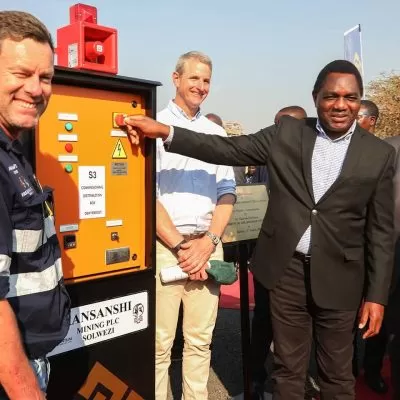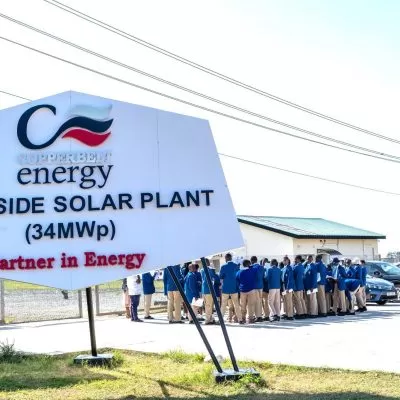By Kalata News,
Lusaka: The littering of Lusaka by local companies and residents is costing the Lusaka City Council (LCC) and the Lusaka Water Sewerage Company (LWSC) millions of kwacha in annual equipment maintenance.
According to Lusaka City Council, the cost of erecting drainages and maintenance of the same is well over 400 million dollars.
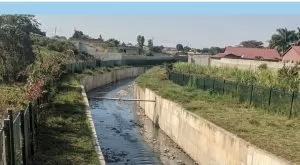 The two entities are feeling the blunt of plastic dumping in the drainages and the careless disposal of waste by Zambians and Zambian companies.
The two entities are feeling the blunt of plastic dumping in the drainages and the careless disposal of waste by Zambians and Zambian companies.
According to the United States (US) Government Millennium Challenge Account (MCC) project, about 332 million dollars were spent in Zambia between 2013 and 2018 to rehabilitate and extend infrastructure and strengthen the institutional capacity of Lusaka’s municipal government responsible for drainage and the local water and sanitation utility.
Of that amount, 293 million dollars were spent at the Lusaka Water Supply, Sanitation, and Drainage (LWSSD) Project.
These investments expanded access to, and improve the reliability of, water supply and sanitation, and improve drainage services in select urban and peri-urban areas of the city of Lusaka in order to decrease the incidence of water-borne and water-related diseases, generate time savings for households and businesses and reduce non-revenue water in the water supply network.
The project stated that the improved drainage infrastructure reduced flooding in Lusaka by 37 percent, and households were half as likely to have a child miss school because of flooding compared to baseline. Members of households that did not experience flooding saved an estimated six hours on their commutes over the course of the rainy season. However, the drainage did not reduce flooding probability during periods of heavy rainfall (>208mm of rainfall over 30 days) and approximately 30 percent of households still experienced flooding annually. Only 4 percent of households reported property damage due to flooding, a statistic that was unchanged since before the drainage was constructed.
However, almost all of Lusaka’s drainages, especially those running through high density residential areas, are currently clogged by plastics and other waste products from both domestic and commercial use. 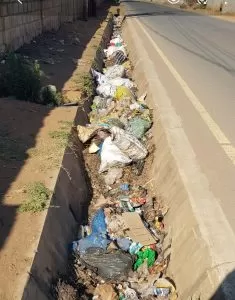
 “Garbage dumping threatens the effectiveness of the drainage. A drainage maintenance unit, new solid waste management utility, and public information campaigns to reduce dumping of garbage were intended to ensure proper maintenance and functioning of the drainage. As of June 2022, drainage maintenance was done by a contractor funded by the national government (a solution which was not guaranteed for the future). The new solid waste management utility had not been created and the municipal staff who coordinate community engagement did not have funding for these activities. As a result, several sections of the drainage were clogged with garbage or silt. Only 60 percent of households surveyed in 2022 used formal garbage collection services, and 9 percent reported dumping trash in the drainage or streets,” stated the USG MCC Project. A survey by Kalata News Media found residents have developed a habit of dumping their waste in these drainages with the hope that Lusaka Water and Lusaka Council would come pick them for them.
“Garbage dumping threatens the effectiveness of the drainage. A drainage maintenance unit, new solid waste management utility, and public information campaigns to reduce dumping of garbage were intended to ensure proper maintenance and functioning of the drainage. As of June 2022, drainage maintenance was done by a contractor funded by the national government (a solution which was not guaranteed for the future). The new solid waste management utility had not been created and the municipal staff who coordinate community engagement did not have funding for these activities. As a result, several sections of the drainage were clogged with garbage or silt. Only 60 percent of households surveyed in 2022 used formal garbage collection services, and 9 percent reported dumping trash in the drainage or streets,” stated the USG MCC Project. A survey by Kalata News Media found residents have developed a habit of dumping their waste in these drainages with the hope that Lusaka Water and Lusaka Council would come pick them for them.
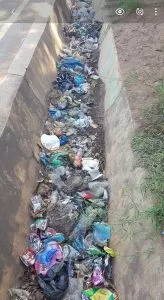 Equally companies whose products use plastics as wrappers have no concern about where their products and their waste end up.
Equally companies whose products use plastics as wrappers have no concern about where their products and their waste end up.
A look at the drainages reveal all kinds of products ranging from water bottles, soft drinks and plastic wrappers clogging these drainages.
Lusaka City Council and Lusaka Water and Sanitation Company will need to begin collecting drainage cleaning funds from commercial entities whose products currently clog their drainages and water pipes.


